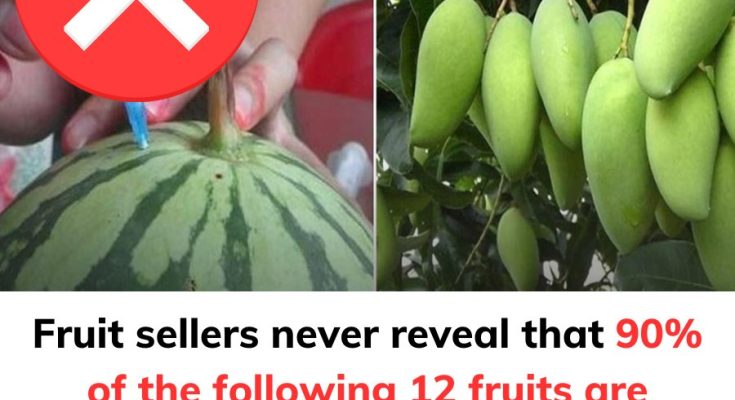
When it comes to fruit, we rarely talk about prices, we usually talk about its safety: Which type has a lot of pesticides, which type has less… So I’m used to having a friend who is a fruit connoisseur, so wherever I go to buy something related to fruit, I always call or text him for advice. There are some types of fruit that he says the whole family never eats, and sometimes they don’t sell well and they throw them away because they have too many pesticides, ladies. I’m an outsider so I can’t imagine it.
He always tells us: If you bother to eat fruit to be good for your health, you should choose the type that is safe to eat, good for the whole family. If you don’t know that eating a type that is full of chemicals is like having the opposite effect, not feeling healthy but bringing illness into your body.
According to my friend and the information I’ve read in the press, there are some types of fruit that are at high risk of being contaminated with chemicals, I’ve listed them below the article, mothers, please refer to them:
1. Pears
This type is considered the fruit that contains the most chemicals. It is sprayed with pesticides continuously. Specifically, pears are injected with stimulants to force them to ripen early or growth stimulants, then bleach and colorants (lemon yellow) are used to dye the fruit to make it look more beautiful.
2. Grapes
People often soak green grapes in a diluted ethephon solution, after about two days the green grapes will turn purple. If you eat them regularly, it will be harmful to your body. Grapes have a thin skin, which cannot prevent pesticides from penetrating into the fruit.
3. Bananas
In the past, my mother also said that bananas were ripened with carbide, which is very harmful. To be safe, you should use vinegar or let them ripen naturally. However, nowadays, they often use chemicals to soak bananas to make them ripen more evenly to attract customers.
4. Peaches
Peaches are also a nutritious fruit but are soaked with many toxic chemicals. Pesticides or chemicals sprayed during the peach growing process are very difficult to wash away.
5. Apples
The young apples are covered with a bag soaked in banned pesticides until they are ripe, the fruit will be smooth, pink and mold-free, so they can be sold at a very high price. The white spots inside the bag are pesticide powder. Therefore, mothers need to pay attention if they intend to buy or eat apples.
6. Chinese oranges
Usually have a very eye-catching, juicy outer shell, but try forgetting them for about 3 months. Make sure they are still fresh while the inside is dry or rotten. The reason is because a large amount of chemicals have been soaked into these oranges to keep them longer.
7. Strawberries
Most strawberry growers often use methyl bromide, a toxic chemical that depletes the ozone layer, to eliminate fungi for strawberries… Although delicious and plump, in the process of producing strawberries, people have used a lot of pesticides because this fruit is very susceptible to pests.
8. Jackfruit
The more chemicals, the faster the jackfruit ripens. Injecting chemicals can take less than 12 hours to ripen the jackfruit. Just mix the chemical bottle with 500 ml of water, use an iron rod to punch holes in the jackfruit and pour the chemical mixture in, no matter how green the jackfruit is, it will turn golden yellow but it is ‘incubated’ with toxic substances that are harmful to consumers’ health.
9. Sapodilla
To make sapodilla more eye-catching, sellers often soak the fruit in a solution said to be iron powder mixed with water. Sapodilla soaked in iron powder has a dark yellow color, while clean sapodilla has a natural green color. Furthermore, many people also soak sapodilla with chemicals to make them ripen quickly and evenly, which is extremely harmful to consumers’ health.
10. Papaya
Just drop a few drops of the solution from a small medicine bottle the size of a little finger onto the stem, and the green papaya just picked from the tree will ripen to a beautiful golden yellow after a few hours. Are you shocked to hear that?
11. Mango
Mangoes are often used with too many preservatives. Mangoes are also a fruit that is difficult to maintain quality during harvesting and transport, so people often harvest them while they are still green, then use ripening chemicals to make the mangoes look more delicious without being crushed. When buying mangoes, mothers should avoid mangoes that are still green on the outside or have a light yellow-green color but are ripe yellow on the inside because these fruits are at risk of being used with chemicals.
12. Watermelon
Watermelon uses many stimulants to help the fruit ripen faster. Moreover, they also use chemicals to help the melon have a sweeter taste, and to keep it longer.



